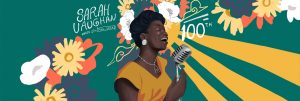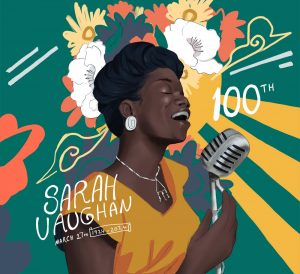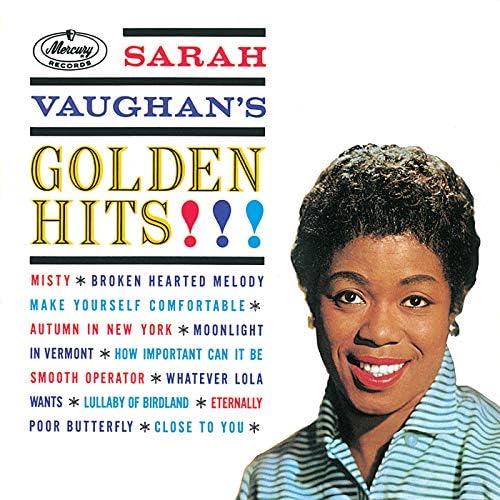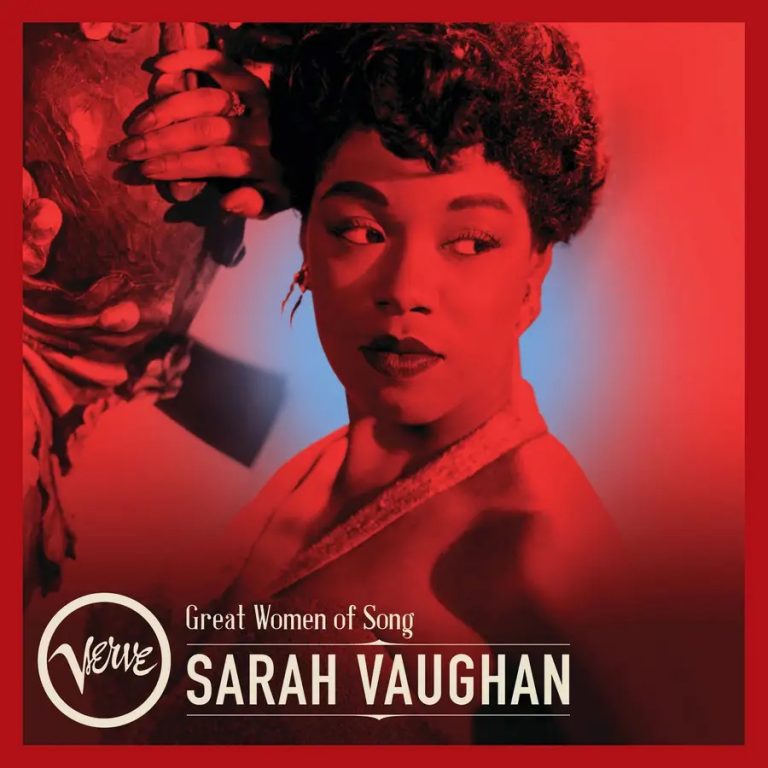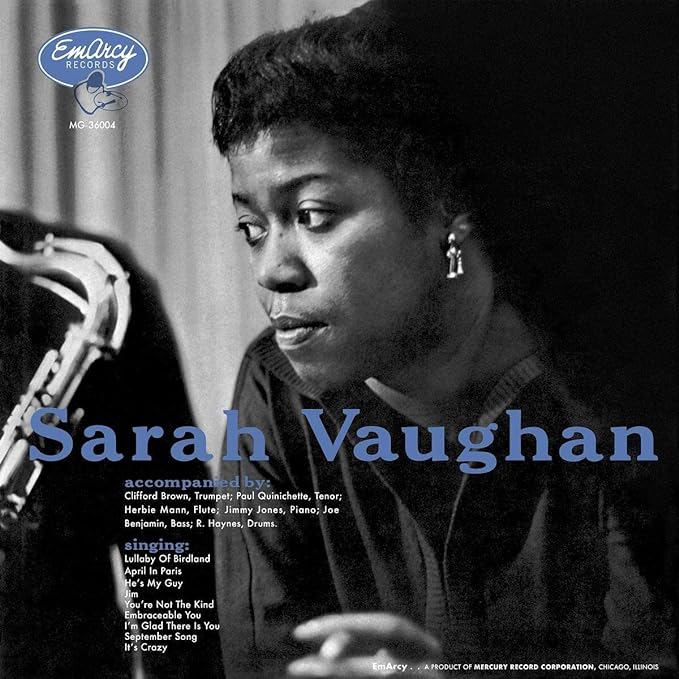Have you ever been stopped in your tracks by a voice? Well, I have. Many years ago, when I was at University, I was dating a guy who was an absolute Jazz Head. At the time, I knew nothing about jazz except as background music in bars, etc. As part of our courtship, he would make me a mixtape of jazz artists to listen to each week. His only criteria was for me to tell him which tracks I loved and what I was not so keen on. So, through him, I learnt about traditional jazz, bebop, hard bop and more, discovering artists I still love today, including Wes Montgomery, Charlie Parker, Miles Davis and even Ornette Coleman.
Then, one day, he brought a mixtape of singers. And I heard Sarah Vaughan for the first time, nestled between Shirley Horn, Billie Holiday, and Nina Simone. I couldn’t believe that voice coming out of my tiny speakers—the depth, the range, the absolute finesse of it all. I gasped in amazement. And there and then, I fell in love with the voice of jazz singer sassy Sarah Vaughan, ‘the Divine One’.

Sarah Vaughan was born in Newark, New Jersey, on 27th March 1924. She was an only child. Her parents were amateur musicians who attended New Mount Zion Baptist Church, Newark. When she was 8, she began studying piano and organ, and at the age of about 12, Sarah became the church organist. Her ambition at the time was to become a good choir director. But at 19, despite her parents’ desire for her to stay in the church, she decided to become a professional entertainer. She entered an amateur contest in 1942 at the famous New York Apollo Theatre. Singing the classic 1930’s tune “Body And Soul”, she won first prize. And that was how her career began.
Her initial solo gigs were difficult despite having recorded with Dizzy Gillespie and Charlie Parker, who were fans of her voice, and touring with the likes of the Earl Hines Orchestra and the Billy Eckstine band. “I was nothing much to look at,” she said in one interview. She noted that colourism was a factor. “I often wished I was a medium-brown skin colour,” she once said. “I imagined people that colour were regarded more highly than I. To most persons who knew me, I thought I was just another little black girl for whom the future was just as dark as it was for thousands of others like me.” One New York critic at the time even wrote: “She is not exactly handsome to look at, having a toothy face with a flattened, ski-jump nose, almost oriental eyes, and a low forehead oppressed by a pile of black hair.” Ouch!
On top of that, she was shy, and she had horrendous experiences when she first started as a solo vocalist. Take, for instance, the time she tried to perform at the Chicago Theatre and was pelted with actual tomatoes by a bigoted audience.
Such incidents knocked her confidence, and it wasn’t until she had plastic surgery and a wardrobe makeover, all paid for by her first husband, that she regained some modicum of confidence. But her musical knowledge was never in question. A contralto, she had a 3-octave vocal range. “While playing piano in the school band,” she said, “I learned to take music apart, analyse the notes, and put it back together again. By doing this, I learned to sing differently from all the other singers.”

The first song I heard Sarah sing on that mixtape was the George Shearing tune ‘Lullaby of Birdland’ with lyrics by George David Weiss, which Sarah recorded in December 1954. There’s a short scat intro where she mirrors the instrumentalists before launching into the full song. It’s like cashmere for the ear as she caresses high and low notes. As she ends the first verse, the lyric, ‘All because we’re in love’, is sung deliciously in her lowest register. Then there’s a wonderful trade-off between her and instrumentalists. I have learnt it and tried to sing it, but there is something magical that she does with it that you can’t really mimic. Even today, it still thrills me to hear it. And Sarah also has the ability to imbue each song with humour. I often laugh out loud listening to her, like when she sings ‘Whatever Lola Wants’ on the Great Women of Song album: that bite, wry humour and pure sassiness. Unsurprisingly, the single peaked at No. 6 on the Billboard and Variety charts when it was released.

I’m not alone in my love for Sarah Vaughan. I recently sat down for an extensive chat with Jamie Krents, president of Verve and Impulse! Records, and we talked about Sarah. I asked him what he thought of her. “It’s funny; sometimes people try to analyse the differences between great female jazz singers. I think the word that always comes to my mind when I think of Sarah is ‘tone’. She had an incredible technical ability, but her sound, the timbre of her voice and that tone set her apart. Nobody sounds like her, and I don’t think there ever will be. It’s not about scatting or anything that’s pyrotechnic. She just had a sound to her voice that elevated whatever song she was singing and whoever she was playing with.”
If a singer is to have a vocal hero, and she is definitely one of mine, you can’t go wrong with taking the time to study Sarah. And Jamie Krents agrees, “There are a lot of singers out there today who can do amazing things, but they would be well advised to spend some time with Sarah’s recordings. There are, obviously, tunes like “Misty,” which are her hits and are fantastic, but there are also some of the deeper cuts that I think younger people would be surprised how much they could connect with.”
And talking of younger fans, Jamie notes Sarah influences singers such as the multi-award-winning singer Samara Joy. “They do get compared a lot, and I think it’s almost reductive sometimes when people just say she sounds like Sarah Vaughan. I get it. There are some tonal things, some phrasing things, and Samara loves Sarah Vaughan but is saying clearly, ‘I’m not gonna just sing Sarah’s licks. I’m not just gonna use her phrasing’. I think a tune like ‘Guess Who I Saw Today’ is a good example of Samara saying, ‘I’m going to bring my own thing to this’ ”.
For me, Sarah Vaughan’s legacy is that she continues to inspire vocalists by challenging us to be individuals, to revere and acknowledge her influence, and to do our own thing, free from the constraints of expectation.

Sadly, Sarah died too young, at the age of 66, on 3rd April 1990. She was inducted into the Jazz Hall of Fame. What a treasure trove of music she left us with. As we mark the centenary of her birth, please take the time to explore her catalogue again. For instance, the album Sarah with Clifford Brown is just a gem. Hear the wonderful interplay between them and the musical depths that she brought to every tune. Jamie concurs; one of his favourite tracks from it is ‘September Song’. “I feel, he says, “You could teach a course in music school just on that album alone.” Hear, hear!
Thank you for the music, Sarah Vaughan. Happy, Happy Birthday!
Read on…Ella Sings the Blues – “Let No Man Write My Epitaph”
Jumoké Fashola is a journalist, broadcaster and vocalist who currently presents a range of Arts & Culture programmes on BBC Radio 3, BBC Radio 4 & BBC London.
Header Illustration: Sarah Vaughan by Bokiba.

